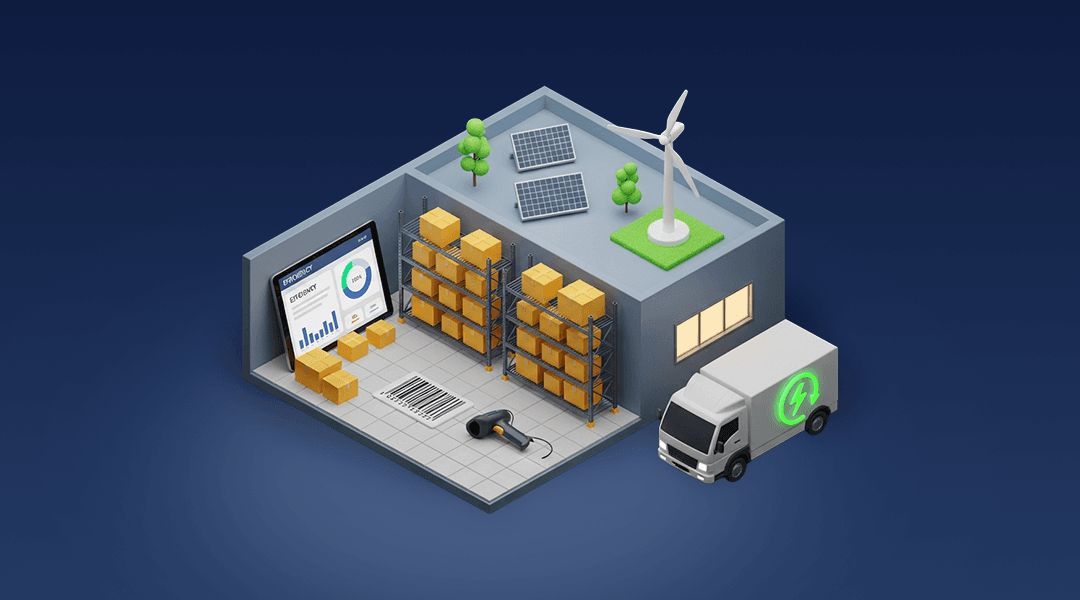Order Management Systems Guide: eCommerce & Retail

Table of Contents
As eCommerce continues to grow, businesses, small or large, need multiple ways to both manage sales and inventory for online stores and offline. Thanks to omnichannel driving the way forward, eCommerce is becoming as important as actual retail stores when it comes to revenues and profits. In this competitive environment, companies must constantly ensure customer satisfaction and retention. This is where order management systems play a vital role.
Whether it is maintaining stocks, order processing, replenishment, or more, an order management software solution is crucial to all supply and demand processes today.
The order management software (OMS) market size was valued at $2.95 Bn in 2023 and is projected to reach $3.17 Bn by 2030, growing at a CAGR of 5.48% during the forecast period 2024-2030.
These numbers highlight how effective order management is key for operational efficiency and consumer satisfaction in business today. Organizations need to stay up to date, maintain real-time stock visibility, and manage order processing complications constantly. Order management systems (OMS) handle these challenges by acting as a central hub. They seamlessly connect eCommerce platforms, stock levels, and shipping partners like Amazon, Shopify, Noon, FedEx, DHL, Aramex, UPS, Noon, and more to centralize all your data and operations.
For instance, Ominful’s AI-powered OMS system helps businesses streamline workflows, automate processes, and organize information. With key functions like smart order routing, inventory control, and multichannel order management support, these OMS systems seamlessly streamline the entire order lifecycle. In this article, we look into how an OMS improves business efficiency, eliminates manual processes, tackles common challenges like inventory management and multi-channel order processing, and enhances customer satisfaction. We further help you with a practical guide on selecting your ideal OMS partner. Let’s dive in.
What is an Order Management System (OMS)?
An order management system (OMS) software is a system that automates the entire ordering process. It lets you manage your inventory, sales, and customer information in one platform, making it easy to access all this information from any location. An OMS system can also help you automate tasks like order processing, shipping, invoicing, and payment collection. Essentially, an order management system serves as your hub for the entire order lifecycle.
This kind of software for order management systems allows businesses to reduce reliance on manual processes. Modern, order management software helps these systems easily integrate with sales channels, warehouses, and shipping partners. This helps businesses get real-time visibility into order status and inventory levels. Real-time inventory visibility also helps managers and business owners keep track of all orders without errors. Order fulfillment rates can be improved thanks to automated OMS processes. As a result, customer satisfaction increases, and businesses benefit from higher profit margins.
For omnichannel retail and eCommerce players, an order management system becomes critical for supply chain management. OMS solutions handle orders across physical stores, online marketplaces like Amazon, and other direct eCommerce platforms. Order management solutions for eCommerce can be optimized with partial order management functionality, fulfillment, multichannel support, and other OMS features. An order management system helps eCommerce companies prevent stockouts and overselling while optimizing warehouse and fulfillment operations.
These aspects make an OMS system an important driver of operational efficiency and growth across modern logistics and supply chain processes.
Why Your Business Needs an Order Management System
Order management systems work with nearly all aspects of modern supply chains. Managing orders without order management software can lead to several challenges. Customer satisfaction is impacted, processes can be disrupted or delayed, and profit opportunities are lost when there is no right order management solution. Some common challenges businesses face include:
Inventory Discrepancies
Inaccurate inventory counts, double-selling, and stockouts create confusion for both the businesses and customers. Without real-time updates, you might find yourself selling out-of-stock products or underestimating available inventory. This can lead to delayed fulfillment and missed opportunities.
An OMS provides real-time visibility into your inventory across all channels. It automatically updates stock levels as orders are placed and fulfilled, reducing the chances of discrepancies. This way, businesses always have refreshed, accurate information. Customer demands can then be fulfilled without delay or miscommunication.
Delayed Order Processing
Manual order processing can be slow and prone to human error, leading to fulfillment delays. When orders are not processed efficiently, customers are left waiting, which can result in poor reviews and lost business.
An OMS automates the entire order lifecycle — from the moment an order is placed until it is delivered — speeding up order processing and fulfillment. By removing manual data entry and automating key tasks like payment processing, order routing, and shipping, an OMS ensures faster delivery times and fewer mistakes.
Multi-channel Complexities
Managing orders from multiple sales channels — such as physical stores, online marketplaces, and e-commerce platforms — can quickly become overwhelming. Each platform may have different systems for order tracking, which can lead to duplicate entries, delayed shipments, or lost orders.
With an OMS, all your sales channels and inventory management system are connected into a single, unified system. Whether orders come from your website, a third-party marketplace, or an in-store transaction, the OMS centralizes all orders in one place. This way order management prevents duplicate efforts, and ensures that every order is fulfilled accurately, regardless of where it originates.
When an OMS system is used for all order processing needs, companies are likely to see advantages across the typical order process lifecycle. Some benefits of using an order management system include:
-
Enhanced Operational Efficiency: With an OMS in place, businesses experience a significant boost in operational efficiency. Automated workflows reduce manual effort and human errors, freeing up time for teams to focus on higher-value tasks. Faster processing leads to shorter delivery times, creating a seamless experience for customers.
-
Improved Customer Satisfaction: When customers receive their orders on time and without errors, satisfaction naturally improves. An OMS ensures that your business can meet customer expectations with accurate delivery windows, real-time order tracking, and proactive communication. This also has the added benefit of positive reviews and repeat business.
-
Increased Profitability: Thanks to streamlined order fulfillment, reduction in errors, and improved inventory management, an OMS directly contributes to lower operational costs and increased sales. The improved efficiency and customer loyalty fostered by reliable order processing lead to higher profitability over time.
How Does an Order Management Software System Work?
Order management software starts its magic the moment an order is placed. An Order Management System (OMS) streamlines the entire purchase order and lifecycle, ensuring efficiency and accuracy at every step:

It is important to note that your OMS is not a standalone system. It works in conjunction with other ERP systems in your tech stack. A modern order management system seamlessly connects with your TMS, WMS, CMS, and other solutions you use. This way, your OMS does not just help you with managing orders, an AI-powered solution like Omniful goes a step further and provides reporting and analytics to help you optimize and grow your business.
How to Choose the Right Order Management System for Your Business That Leads to Customer Satisfaction
Choosing an order management system for your business can be akin to looking for a needle in a haystack. With so many options and solutions, it can be challenging to decide on the right OMS. So before you select an best order management software or system for your business, you need to look into several factors that are key to software for order management systems:
Features and Functionality
Your ideal order management system will have key features including:
- Realtime visibility
- Delivery and service scheduling
- Customer engagement technology
- Fulfillment optimization
- Reporting and analytics
- Partner management
- Automated order processing
- Customizable workflows
Your ideal OMS should be able to adapt to your specific needs, whether you're managing e-commerce, retail, or wholesale orders. The ability to automate mundane tasks and integrate real-time data is essential to streamline order management for eCommerce and multi-channel operations.
Integration
The most flexible OMS solutions today can seamlessly integrate with other ERP systems on your tech stack. The ideal OMS solution will easily connect with all your other business process software - whether it’s your eCommerce site, marketplaces, payment gateways, warehouse management systems (WMS), or transportation management systems (TMS). The right OMS can centralize data across multiple platforms, enabling efficient multi-channel integration and visibility.
Cost
When picking an order management system for your business, upfront and long-term costs are important considerations. You must look into software license costs, implementation fees, and maintenance. Look at the return on investment (ROI). Most order management systems and software will improve efficiency, reduce fulfillment errors, and ultimately drive profitability.
Vendor Reputation and Support
Picking an OMS is not just about the present; it’s also about your short-term and long-term goals. You need an order management system that will work for you in the long term to provide ROI and benefits. To understand just how resilient and flexible an OMS is, you must also look into the vendor's reputation and support capabilities. Is your OMS provider able to customize the software to your unique business needs? Further, can they provide the support, tech, and business focus when required? Look into customer reviews, vendor testimonials, and track records to find out.
Security and Compliance
Ensure that your OMS adheres to industry standards for data security and compliance. This is especially important for businesses handling sensitive customer data, such as payment information. Look for systems that offer strong encryption and are compliant with regulations like GDPR.
Implementation and Training
Ease of implementation and user training is crucial. A good OMS should be easy to deploy, with a timeline that aligns with your business needs while maintaining customer satisfaction. Training resources such as tutorials, customer support, and an intuitive interface are important factors to ensure a smooth transition.
How Omniful OMS Solves Multi-Channel Inventory Management & Order Fulfillment Challenges
Omniful’s OMS is built to address the complex needs of businesses handling orders across multiple channels. Here's how it delivers:
-
Real-Time Inventory Management: You get accurate, up-to-the-minute tracking of inventory across all sales channels like eCommerce, physical stores, and warehouses with Omniful’s OMS. By centralizing inventory management, your business can avoid stockouts, over-selling, and miscommunication with customers.
-
Automated Order Processing: Automation eliminates manual data entry, reducing errors and speeding up the fulfillment process. Orders are automatically processed, verified, and routed to the nearest fulfillment center, with the Omniful OMS, ensuring timely delivery.
-
Multi-Channel Integration: Our OMS solution seamlessly connects with various e-commerce platforms, ERP systems, and warehouses. Whether you're selling on Amazon, Shopify, via social media, or your website, Omniful’s order management system ensures that orders are captured, tracked, and fulfilled without manual intervention.
-
Smart Order Routing: Omniful’s AI-powered OMS analyzes factors like inventory levels, hub capacity, and shipping costs, to select the best hub to fulfill an order. Not only do you save money this way, but also see higher customer satisfaction

Transform Your Order Management Process Today
An order management system is a critical part of a supply chain and logistics operation today. Whether you’re into omnichannel retail, manufacturing, eCommerce, or supply goods via warehouses, shipping, and transportation, you need to leverage a modern OMS solution to gain a competitive edge.
Looking to upgrade your order management process? Explore how Omniful’s OMS can help your business achieve faster fulfillment, better inventory and sales order accuracy, and happier customers.
FAQs
What are the basic steps of the order management process?
The order management process includes order placement, inventory checks, order details, and order processing. It also involves fulfillment and managing delivery or returns to fulfill customer orders.
What trends are complicating the order management process?
Multi-channel selling, rising customer expectations, and globalization are making order management more complex. Additionally, supply chain disruptions further complicate the order fulfillment process.
What are the types of Order Management Systems (OMS)?
OMS types include standalone systems that focus solely on order management tasks. Other options are integrated OMS, cloud-based OMS, and on-premise solutions.
What is distributed order management (DOM)?
Distributed Order Management (DOM) routes orders to the best fulfillment location based on inventory and proximity. This ensures efficient delivery and optimized fulfillment of customer orders across multiple fulfillment locations.
Can an OMS integrate with my existing e-commerce or ERP system?
Modern OMS systems can integrate seamlessly with platforms like ERP, e-commerce, and CRM. This ensures smooth data flow and unified customer relationship management across systems.
What is the difference between CRM and OMS?
A CRM system manages customer interactions and helps improve sales and customer service teams. An OMS, by contrast, focuses on the logistics of order processing and fulfillment.























